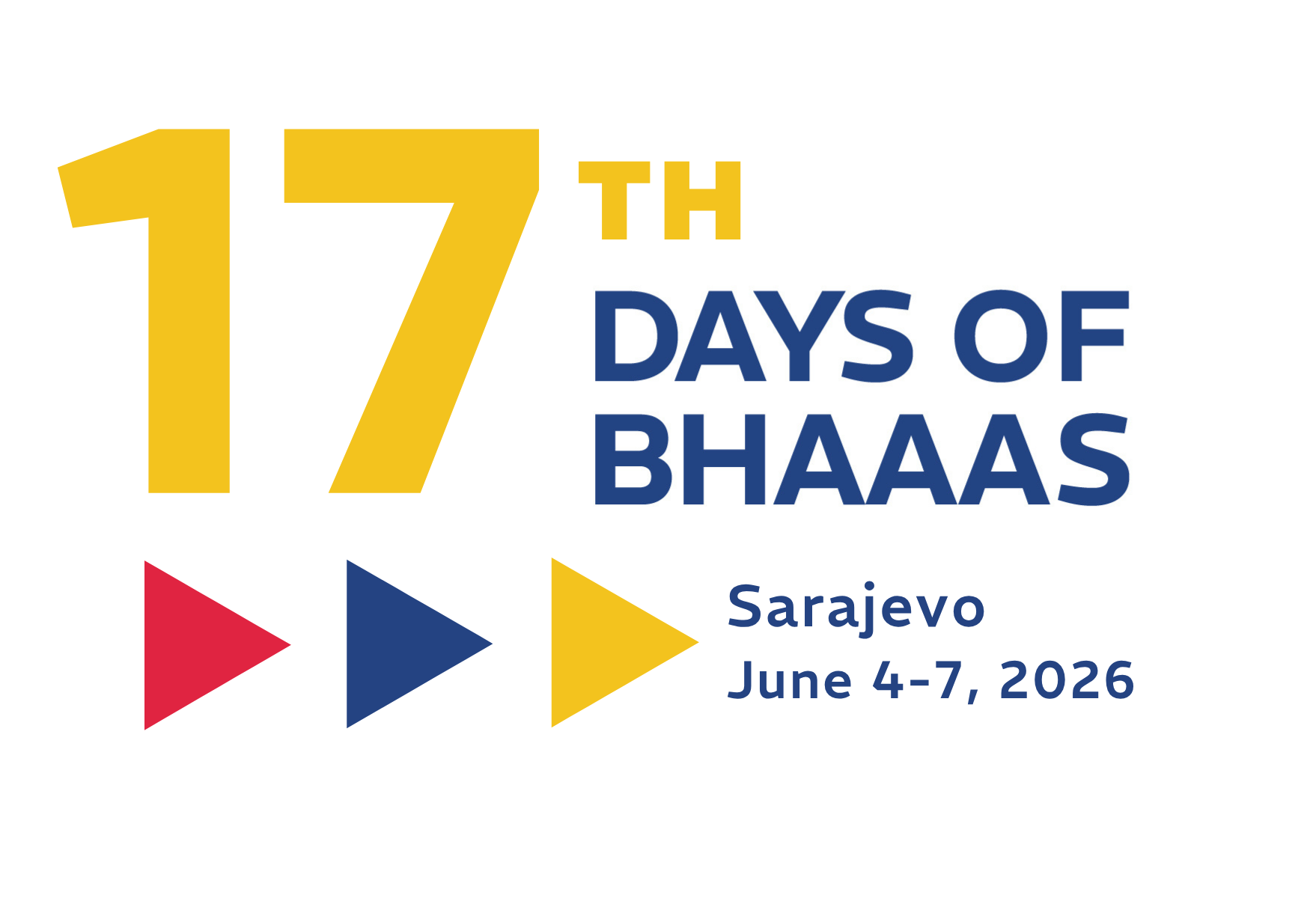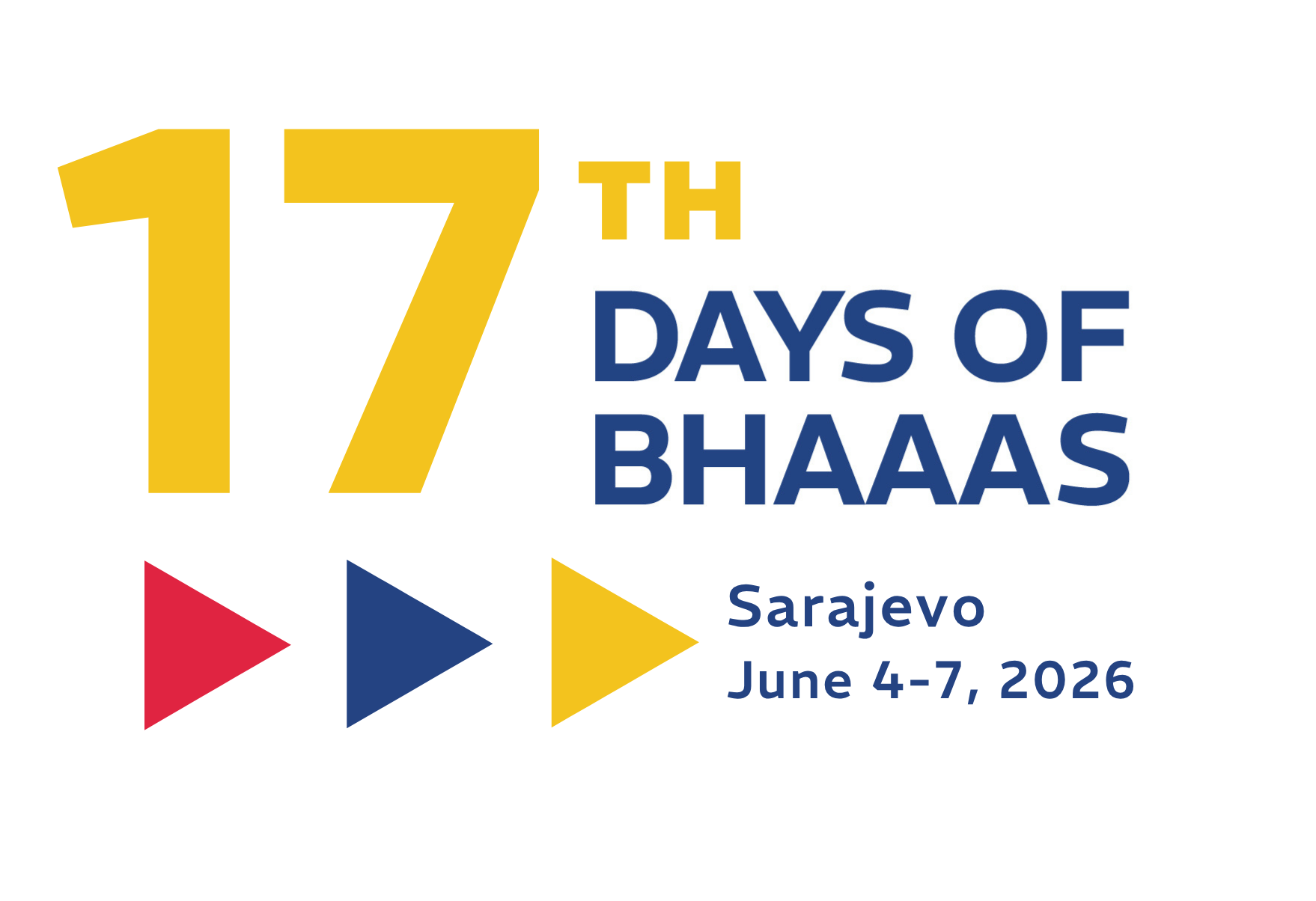Overview and Plenary Lectures
Following a successful symposium of the Technical and Natural Sciences Division, and a comprehensive program in the technical disciplines during the 16th Days of BHAAAS in Sarajevo (June 2025), we are pleased to inform you that the proceeding from the technical symposia is expected to be published by Springer in November 2025. More information can be found at the following link: https://link.springer.com/book/9783032051585.
We are delighted to announce that BHAAAS will stay in the capital of Bosnia and Herzegovina, for the 17th Days of BHAAAS, scheduled to take place from June 4th to 7th, 2026, in Sarajevo. Days of BHAAAS will again include the International Symposium on Innovative and Interdisciplinary Applications of Advanced Technologies (IAT 2026).
This year, we are honored to welcome five distinguished speakers who will deliver plenary lectures during the conference.
Among them is Prof. Adnan Ibrahimbegović, Professor of Computational Mechanics at the University of Technology of Compiègne (UTC), Senior Fellow of the Institut Universitaire de France (IUF), Academy of Sciences and Arts of Bosnia and Herzegovina / ANUBiH Member and Member of Academia Europaea. Prof. Ibrahimbegović will present a lecture on “Synergy of Multiphysics-Multiscale Modeling, and Machine Learning: A Path for Understanding”, highlighting innovative approaches that integrate physics-based modeling with data-driven methods to address complex engineering challenges. Prof. Adnan Ibrahimbegović has an extensive record of scientific publications and international recognition. His research has been widely cited, reflecting the high impact of his work in computational mechanics and structural engineering. According to Google Scholar, he has an h-index of 59 with over 11,100 citations, and an i10-index of 183, indicating a substantial number of highly cited papers. For more information on his research and publications, please visit his personal webpage https://ibrahimb.pers.utc.fr/.
Prof. Qiangfei Xia will give a talk on “Emerging AI Hardware Enabled by Memristive Devices and Systems.” Advancing electronics beyond Moore’s Law requires a revolutionary approach that encompasses new materials, novel devices, disruptive technologies, and alternative computing architectures. A memristor (short for memory resistor) is an emerging device that encodes digital or analog information through distinct resistance states. In this talk, he will start by introducing a computing memristor designed for analog in-memory computing. We will then showcase an AI accelerator that brings together memristive crossbar arrays and CMOS technology on a single chip, highlighting our recent lab-to-fab transfer initiative supported by the CHIPS Act. Lastly, thetalk will delve into diffusive memristors and their applications in neuromorphic engineering. Dr. Xia is the Dev and Linda Gupta Professor of Electrical and Computer Engineering at UMass Amherst and head of the Nanodevices and Integrated Systems Lab (http://nano.ecs.umass.edu). He received his Ph.D. in Electrical Engineering in 2007 from Princeton University. He is a Clarivate “Highly Cited Researcher,” and an IEEE Fellow “for contributions to resistive memory arrays and devices for in-memory computing.
Prof. Seid Korić will deliver a talk titled “Deep Operator Neural Networks – Towards Instant Modeling, Design, and Digital Twins” about his team’s research on developing new variants of Deep Operator Neural Networks (DeepONets), advanced neural architectures that learn mappings from parametrically varying inputs (loads, boundary conditions, materials, or even geometries) to full solution fields of Partial Differential Equations (PDEs) governing physics phenomena in science and engineering. Once properly trained on limited data generated by classical numerical analysis, DeepONets can predict accurate full nonlinear multiphysics 2D and 3D solution fields without retraining or transfer learning and can do so up to 10,000 times faster than classical numerical methods on supercomputers. This drastic computational speedup will enable instant forward evaluations of entire solution design, optimization, sensitivity analysis, and uncertainty quantification (UQ), which were previously intractable even on the largest supercomputers. Dr. Seid Koric has 28 years of experience at the University of Illinois at Urbana-Champaign. He serves as a full-rank Research Professor in the Department of Mechanical Science and Engineering as well as Senior Technical Associate Director at the National Center for Supercomputing Applications (NCSA).
Namik Hrle will deliver a talk titled “The Future of Information Technologies”. Information technologies have been driving major changes in almost every sphere of life for decades. The development of these technologies is constantly accelerating and innovations are catching up with each other faster than ever before. The slowdown of Moore’s law has not yet had a particularly negative impact on the further development of traditional general and special-purpose processors, or classical computing. We are witnessing the breakneck dynamics of the development of artificial intelligence, which has the potential to change the way we work and live. Quantum computers are no longer just theoretical considerations, but concrete computer systems that we can already try out. Namik Hrle is a world-renowned expert in leveraging data and AI technologies for digital transformation and enterprise application reinvention. Retired as Vice President of Development in IBM’s Software Group and honored as an IBM Fellow—the company’s highest technical distinction—Namik has shaped groundbreaking innovations and led global teams in the USA, Germany, China, Canada, and India. He is credited with 79 patents, numerous outstanding technical achievements, prestigious author recognitions, and corporate awards.
Prof. Admir Mašić will give a talk titled “The Alchemy of Roman Concrete: From History to Innovation for a Sustainable Future”. Concrete is the most widely used man-made material in the world and one of of the main contributors to global carbon dioxide emissions, accounting for about 8% of the total. Rethinking its production and role is now of critical importance for environmental sustainability. In this talk, we will explore the historical evolution of concrete (opus caementicium), focusing on the extraordinary technologies developed in ancient Rome. Through an interdisciplinary perspective that bridges history, materials science, and engineering, we will discuss how the chemistry of Roman concrete can guide modern innovation toward a more resilient and sustainable built environment. Prof. Mašić is an Associate Professor of Civil and Environmental Engineering at the Massachusetts Institute of Technology. He is a principal investigator in the Concrete Sustainability Hub at MIT, a faculty fellow in Archaeological Materials at MIT’s Center for Materials Research in Archaeology and Ethnology (CMRAE), and the faculty director of the Refugee ACTion Hub (ReACT) at MIT.
Symposium Topics and Submissions
The International Symposium on Innovative and Interdisciplinary Applications of Advanced Technologies (IAT) is a traditional annual event that cordially invites all professionals, scholars, industry executives, researchers, and students to attend. The symposium gives attendees a great opportunity to strengthen current professional relationships, make new ones, collaborate nationally and internationally, and share cutting-edge research and ideas.
Students are urged to actively participate.
Technical topics covered by the IAT 2026 are expected to be comprised of all topics offered in past years as well as several new topics, including but not limited to:
- Civil Engineering
- Electrical Engineering
- Mechanical Engineering
- Data Science and Geographic Information Systems
- Geodesy and Geoinformatics
- Computer Science
- Information and Communication Technologies
- Advanced Electrical Power Systems
- Machine Learning, Artificial Intelligence, and its applications in all disciplines
- Physics, including condensed matter, materials, and high-energy physics
- Chemistry, including green chemistry and environmental sustainability
- Applied and computational mathematics
- Biology and genetics
- Genetics and Biotechnology (Health and Biodiversity Conservation)
- Other emerging and interdisciplinary topics in technical and natural sciences.
Researchers across the natural, technical, and interdisciplinary sciences are invited to contribute their best work and participate in IAT 2026.
Number of papers: A maximum of two papers may be submitted by the same corresponding author.
Peer review: Submitted FULL papers must be original, unpublished, and not currently under review by any other journals or conferences. Consistent with previous years, all submitted research papers will be double-blind peer-reviewed, and those papers that are accepted will be featured in our forthcoming volume of the proceedings, to be published by Springer and indexed in SCOPUS, INSPEC, WTI Frankfurt eG, zbMATH, SCImago, Google Scholar, and Springerlink. Accepted papers presented at the conference will be included in the proceedings. Papers that are not accepted for publication in the proceedings can be presented as posters.
Paper formatting and submission: Full Papers must be formatted according to the Springer template. Please follow the instructions available at the following link: https://www.springer.com/gp/computer-science/lncs/conference-proceedings-guidelines, and they have to adhere to the Web Content Accessibility Guidelines (WCAG), which Springer Nature follows regarding the (technical) layout and the presentation of the electronic versions.
PLEASE NOTE: Papers not prepared using the official template provided by Springer will be returned to the authors and will not proceed to the next step, which is the revision stage, until they are formatted according to the template. When registering on the platform, please provide your full affiliation and email address in the Springer’s OCS system in case we need to contact you. As the paper undergoes double-blind review, do not include any author information or affiliation in the initial submission of the manuscript, and ensure the content does not reveal the author’s identity. Affiliations should only be added in the manuscript after it has been accepted, during the final submission stage.
Important Dates and Further Info
November 2025 - Call for papers
February 1, 2026 - Submission of full papers
February 22, 2026 - Reviewer reports sent to authors
March 15, 2026 - Corrected full paper upload
March 30, 2026 - Reviewer reports and final decision on paper acceptance
sent to authors
April 15, 2026 - Final paper submission/camera-ready with all necessary documents, Copyright form, Word file, PDF file, a Separate folder for individual pictures, all permissions, and adhere to Web Content Accessibility Guidelines (WCAG).
April 30, 2026 - Conference program finalized
June 4-7, 2026 - Presentation of papers at the conference
July 20, 2026 - Submission of finalized papers to Springer
All administrative and financial inquiries should be exclusively directed to Lejla Tahirović, Project Manager at BHAAAS, via email at [email protected].
All inquiries regarding the status of papers should be sent to [email protected].
If you have any general questions about the BHAAAS Days, please contact [email protected] for further information or assistance.
We welcome all your inquiries and look forward to an engaging and successful collaboration!
Best regards,
On behalf of the Organizing Committee of the Technical and Natural Sciences
Division:
Naida Ademović (University of Sarajevo)
and
Aljo Mujčić (University of Tuzla)

 English
English
 Bosanski
Bosanski





